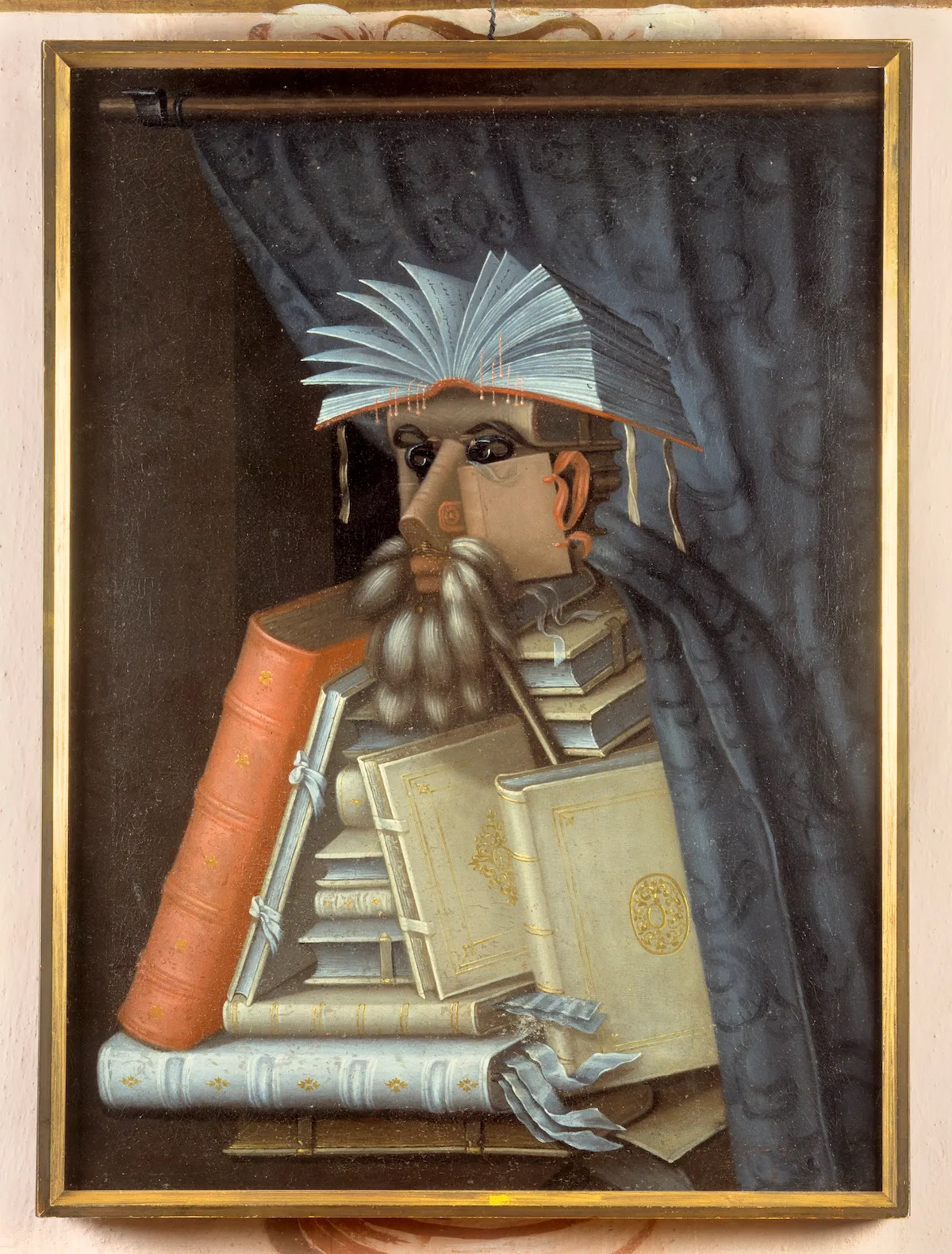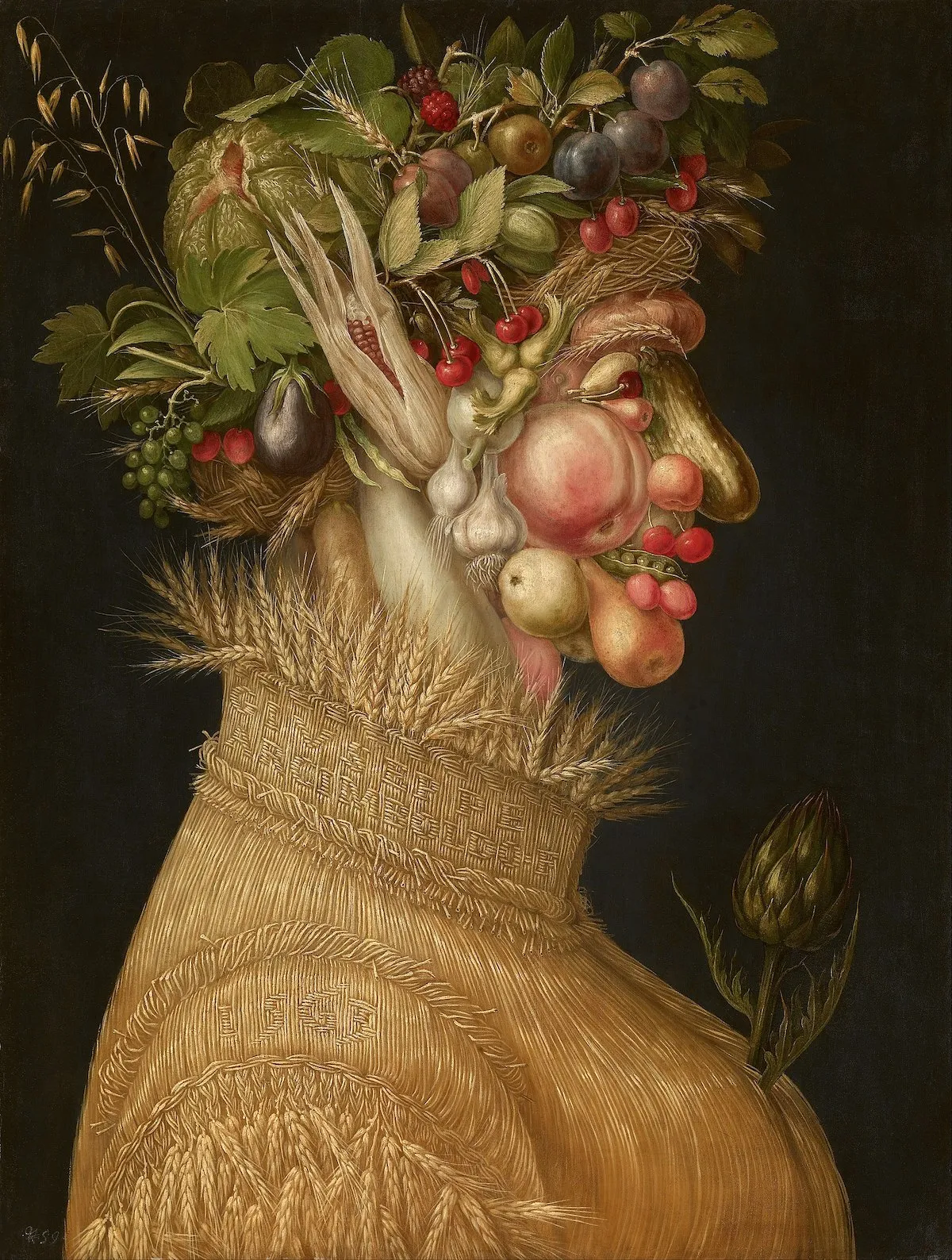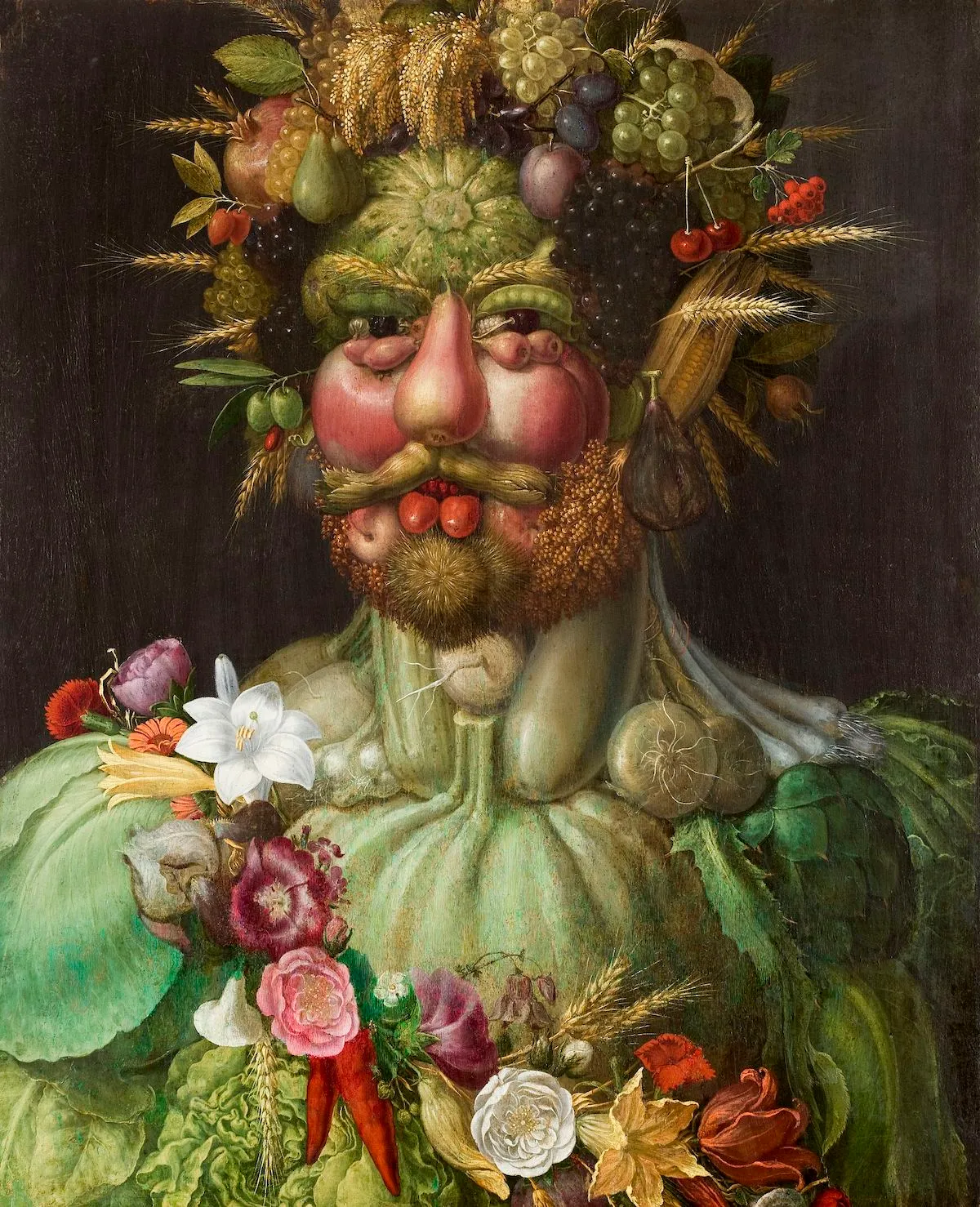Giuseppe Arcimboldo

Giuseppe Arcimboldo was born in Milan in 1527, the son of a cathedral artist. At first, he followed a conventional path designing stained glass, tapestries, and church frescoes. But once he joined the court of the Habsburg emperors in Vienna and Prague, his imagination took flight in a direction no one saw coming.

Instead of painting nobility with traditional oil techniques and solemn expressions, Arcimboldo began composing his portraits entirely from objects: fruits, fish, books, birds, logs, lanterns. His 'composite heads' weren’t just visual jokes, they were layered riddles, steeped in Renaissance science, mythology, and allegory. Each face told a story, not only about its subject, but about how humans and nature are woven together.

His series 'The Four Seasons' and 'The Elements' reflect a fascination with biology and cosmology—each profile built from flora, fauna, and weather phenomena, celebrating the Habsburgs’ power over both court and cosmos. The bizarre portraits were adored by Emperor Rudolf II, who sat proudly for Arcimboldo’s legendary painting 'Vertumnus' — a seasonal mashup of grapes, corn, cherries, and more that cast him as a divine force of fertility and rule.

Arcimboldo was more than a visual prankster. He was a visual alchemist. His reversible paintings (like 'The Cook') turned still lifes into faces when flipped upside down. 'The Librarian' skewered upper-class scholars who collected books as trophies. His mind-bending approach anticipated Surrealism by 300 years and influenced artists from Dalí to Jan Švankmajer.
Though long dismissed as a novelty, Arcimboldo's work is now recognized as genius—a fusion of science, satire, and surrealism that defied artistic norms. In every twisted vegetable and carefully placed scroll, there’s a challenge to see differently. To this day, his portraits beg the question: What makes a person... a person?

?
How do Arcimboldo’s portraits challenge traditional ideas of what a human face should look like?
Why might Arcimboldo have chosen to use books, fish, or vegetables to build his subjects?
In what ways do Arcimboldo’s paintings reflect the scientific and philosophical interests of the Renaissance?
What is the symbolic meaning behind using nature to create portraits of powerful rulers like Rudolf II?
How does 'The Librarian' critique class or intellect through visual metaphor?
Can art that appears humorous or strange still be taken seriously? Why or why not?
How do Arcimboldo's reversible images play with perception and meaning?
Dig Deeper
A short documentary that explores Arcimboldo’s imaginative style of portraiture, the historical context of his work, and the visual tricks that continue to inspire artists centuries later.
Discover more

Vincent van Gogh
Van Gogh taught the world that art doesn’t have to be perfect to be powerful. He painted with emotion, lived with passion, and used color like a language all its own. His story reminds us that even when the world doesn’t see your worth right away, your vision can still change it forever.

Claude Monet
Monet didn’t just change how we paint, he changed how we see. He taught us that beauty lives in the passing moment, that light and color are always shifting, and that the act of seeing is an art in itself. His brush made the invisible visible, and the ordinary unforgettable.

Johannes Vermeer
Vermeer’s work is a reminder that beauty is everywhere — in a quiet room, a shaft of sunlight, or a fleeting glance. He painted not just what he saw, but what he felt in the presence of the ordinary. Through his brush, the mundane became magnificent.
Further Reading
Stay curious!
